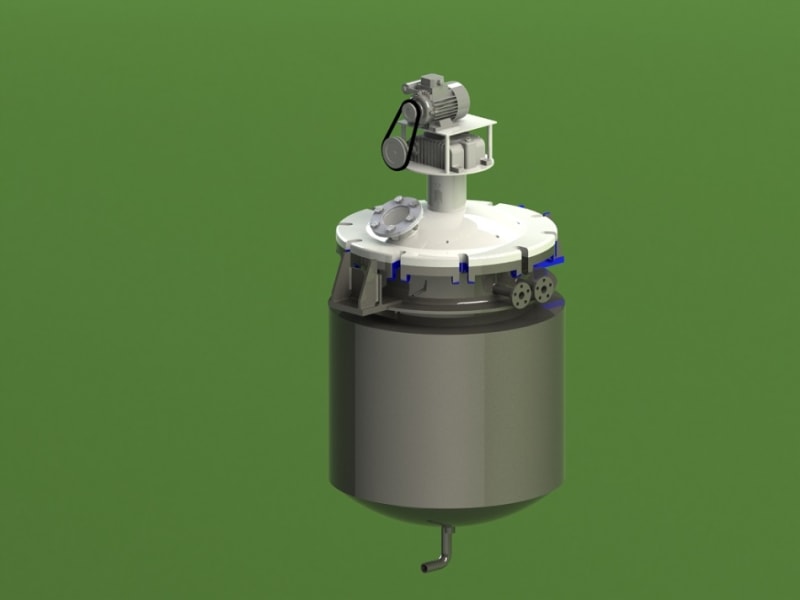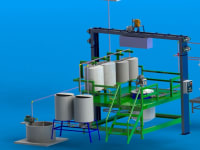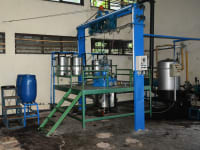The bioethanol-reactor aims to combine the delignification and SSF process simultaneously in a single reactor. Function of this tool is to reduce levels of lignin, and also used in the saccharification and fermentation of lignocellulosic materials.This reactor is designed to produce second generation of bioethanol.
The reactor is a jacketed reactor with 120L volume, made of stainless steel ss 304 and 5mm thickness. It is equipped with a single stirrer blade. Jacket that is filled with thermal oil heaters, blanketed the reactor with 50mm thickness from the walls of the reactor, fiber-ceramic is also used as an insulator. Height of the reactor is 660mm from the bottom of the reactor which is shaped earthenware. It also is equipped with control glass, pressure gauge, safety valve, thermometer, and a solenoid valve, which is connected with a thermometer to control the temperature.
Cooling and washing of raw materials can be performed directly in the reactor, with a pipe as a coolant laundering at the reactor. The top cover of the reactor can be controlled to be able to move vertically or horizontally with the use of cranes.
Currently it is used for producing bioethanol from sugarcane bagasse as waste from process of sugar factory. The reactor is expected not only to increase the economical value of sugarcane bagasse, but also use the waste as renewable energy.
Operation condition of the reactor is as follows: temperature 300º C, pressure 3 bar and 8 kg of dry bagasse capacity. Potential users of the reactor are factories such as sugar mills, palm oil, plantation or agricultural sectors.
Like this entry?
-
About the Entrant
- Name:Roni Maryana
- Type of entry:teamTeam members:Roni Maryana, Wahyu A. Rizal,M. Kismurtono, Satriyo K W.
- Patent status:none








